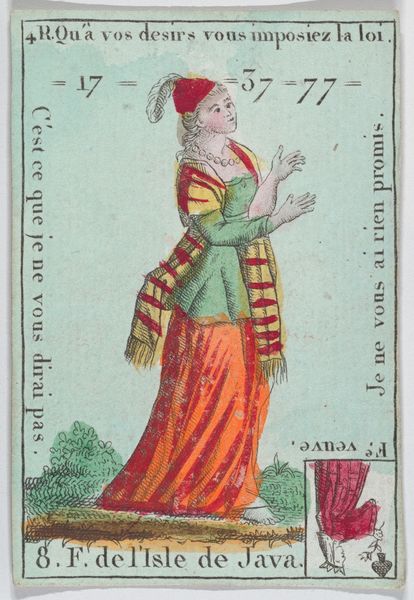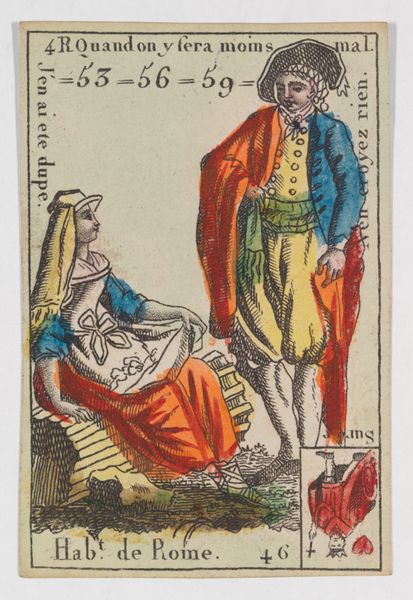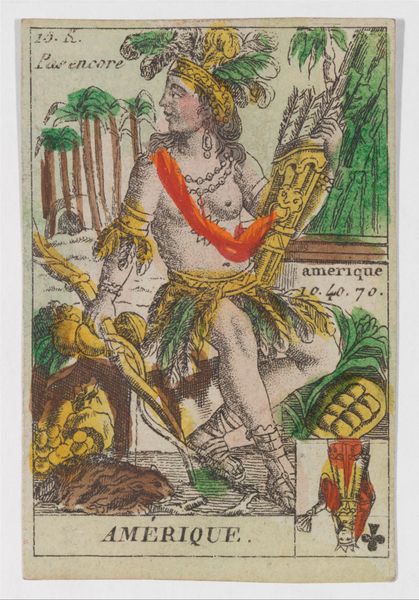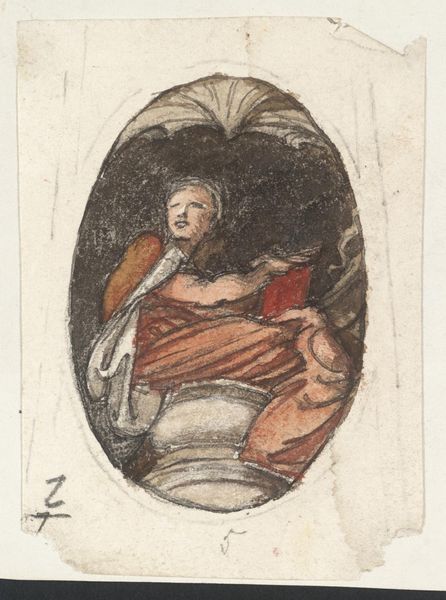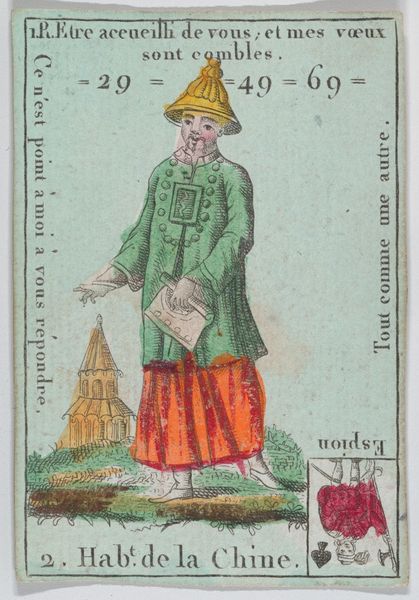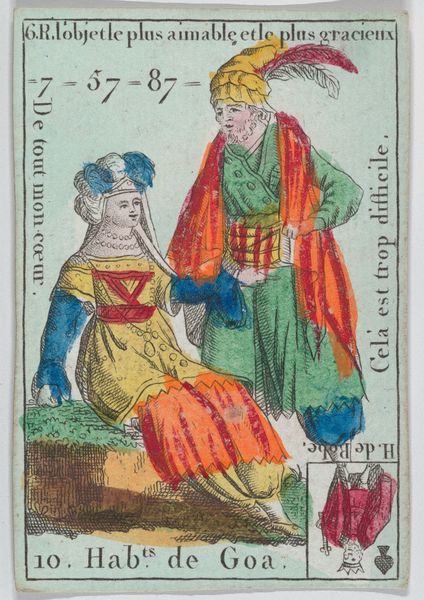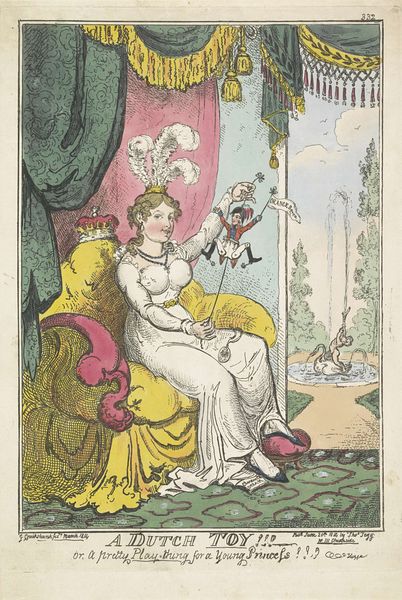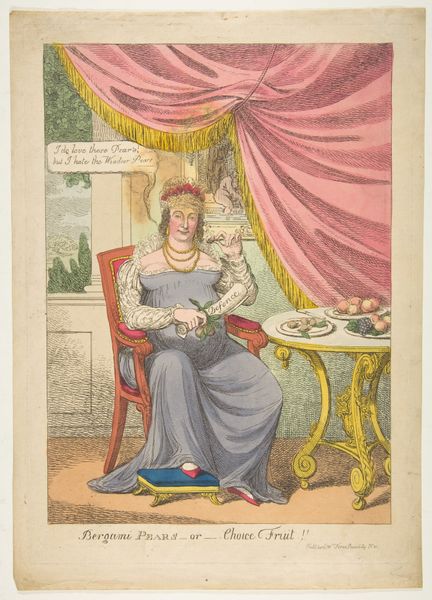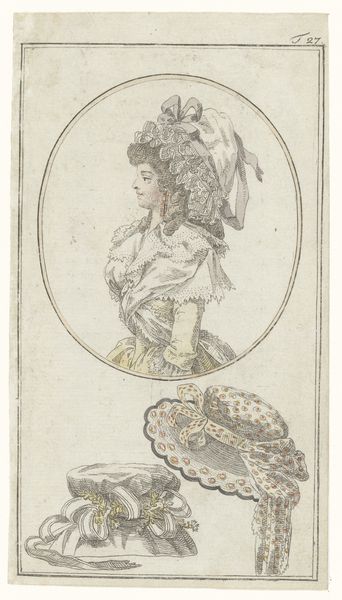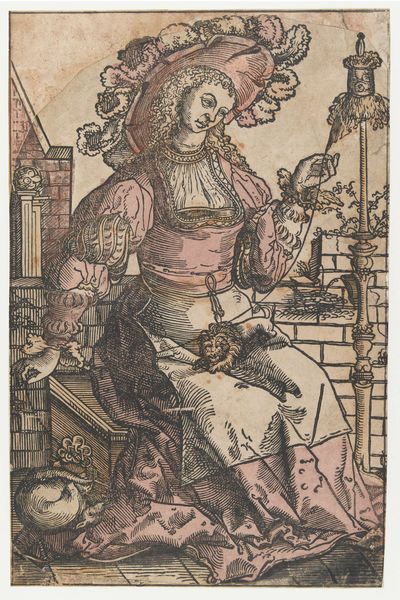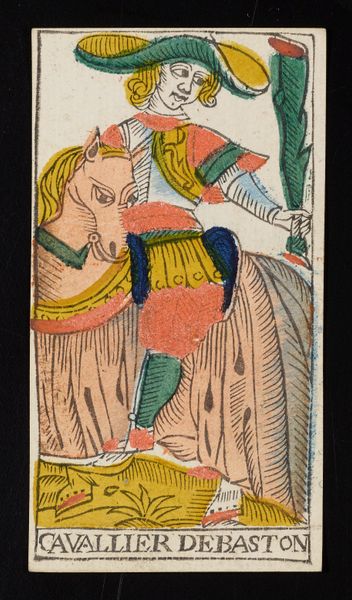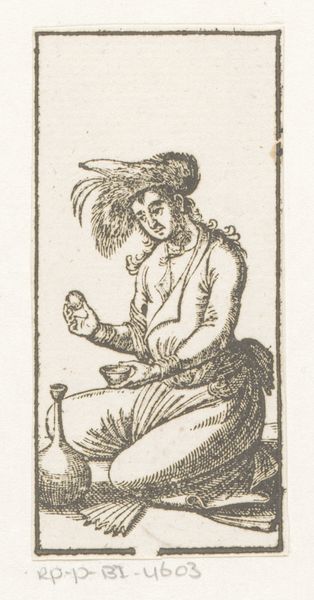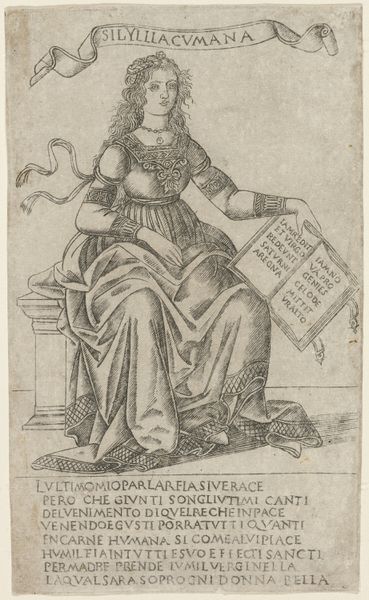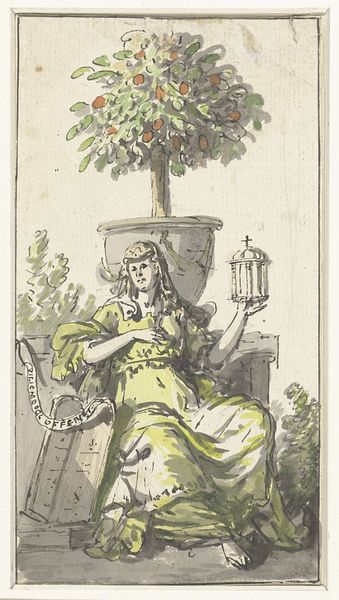
Asie, from the playing cards (for quartets) "Costumes des Peuples Étrangers" 18th century
0:00
0:00
Dimensions: 3 3/16 × 2 1/16 in. (8.1 × 5.3 cm)
Copyright: Public Domain
Curator: Looking at this print, what jumps out to you initially? Editor: Well, immediately it feels like a stage set. The composition, the colors… it's theatrical, almost like a character waiting for her cue. Is this portrait supposed to be an actual person, or more of a symbolic representation? Curator: It's a bit of both, actually. This piece is called "Asie," and it comes from a series of playing cards called "Costumes des Peuples Etrangers" or "Costumes of Foreign Peoples." They date back to the 18th century. It's currently located here at the Met. Editor: So, fashion as identity, then? Using costume to define a place, a culture... and "Asie," or Asia, becomes this figure. Interesting, though I'm getting more of a generalized "Orient" vibe rather than anything specific to, say, China or India. Curator: Exactly. The cards are by an anonymous artist and employ etching, colored pencil, and print techniques. You can see it’s less concerned with accurate cultural representation and more with conveying a European idea of "Asia" through carefully chosen signifiers. Editor: The feathered turban, the vaguely Moorish patterns… it’s like a greatest hits of Orientalist tropes! Though, I do find the palette quite charming, the slightly faded colors lending it a dreamlike, storybook quality. The rendering feels… incomplete? Look at the coloring that's out of line from the black contours. It gives the whole thing a slightly naive and vulnerable aura. Curator: It does contribute to that feeling of otherness. Notice the playing card suit emblem, it's meant to identify and categorize. Costume here becomes another marker, as defining and maybe even as reductive as a suit in a deck of cards. How does the visual language perpetuate those ideas, or even challenge them? Editor: Challenge? I think that's a strong word. Maybe subtly comment on…but not outright oppose them. What intrigues me is how playful and flat the picture is; it really reminds us of our ideas of representation, what gets emphasized and erased to paint the full portrait of an identity. I guess, this print becomes part of the history that is its own subject here. Curator: Indeed. The dialogue itself continues. Editor: Well, that's certainly given me something to consider! And, to think, it all began with a simple card game!
Comments
No comments
Be the first to comment and join the conversation on the ultimate creative platform.
